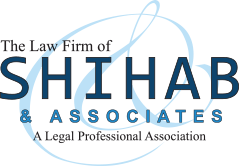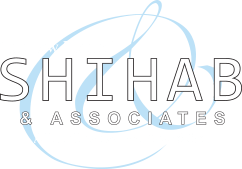Due to recent changes in the immigration law, the process of securing an H-1B visa has become more complicated as the US Department of Labor (USDOL) is examining applications with a higher level of scrutiny. Effected areas include roving employees, third party placement, and additional requirements for H-1B employers who receive TARP funding. Our immigration lawyers at the Law Firm of Shihab & Associates, Co., LPA have extensive experience in this area, and we can competently represent your interests and avoid pitfalls that can negatively affect your case. Contact us for a consultation.
H-1B employees who will work at multiple locations can cause serious delays if not handled properly during the LCA processRoving employees can cause delays and denials as well. The workplace location must be listed on the LCA and on Form I-129, which will be reviewed by the US Citizenship and Immigration Services (USCIS). This may not be easy to determine because there are different legal definitions of what a “place of employment” is. Take the roving employee for example. Third party placement may cause critical issues in filling out the correct worksite accurately on the LCA and on the I-129 Form. Computer technicians, sales representatives, physical therapists, and others may necessitate filing an LCA with multiple locations, using multiple-slot LCAs, or using the short-term placement rule. The issue of location can affect whether the USCIS believes there is legally an employer-employee relationship due to issues with jobsite location.
When is an employee’s location considered to be a worksite by the USDOL?
Non-worksites
An LCA must be filed and certified for any location that is a “place of employment,” defined as “the worksite or physical location where the work is actually performed.” There is an exception to this rule for “non-worksite locations” and for short-term placement. Examples of non-worksite locations include restaurants for meetings with customers, libraries for conducting research, hotels where employees attend educational conferences, and courtrooms where professionals serve as expert witnesses. These are not considered worksites by the USDOL, and it places no time limits on these activities.
When an H-1B worker will visit a customer company worksite to provide a service for a limited period of time, that worksite is not considered a “place of employment.” However the USDOL does place a time limit on these activities. When an employee is acting in the role of a student, travel cannot exceed five consecutive workdays. A worker who has no long-term home base and is regularly on the move and spends most work time at one location and travels occasionally to other locations, travel cannot exceed 10 consecutive workdays per visit.
Short-term placement
The other exception is the short-term placement rule. This applies when the employee is given a short term placement or assignment at any worksite or worksites, there is no LCA in place for the location, and the employee does not work in any non-LCA location for more than 30 workdays in a single year, which can be the calendar year or the employer’s fiscal year. The employer can extend this to 60 days if it can be shown that the worker maintains a workstation at the permanent worksite, spends a substantial amount of time at the permanent worksite, and maintains a place of abode in the area of the permanent worksite. Once this workday limit is reached, the employer is not permitted to place that employee or any other H-1B employee of the same occupation in that area of employment, until one year from the beginning of the next one-year period or until an LCA is in place.
It is important to note that employers must reimburse employees for expenses involving travel to and from non-worksite locations. Also, H-1B employees are forbidden from working in an occupation at a site where workers are on strike or lockout.
What about employers who do not know how long a worksite will be used or how many employees will be needed?Employers may now wish to file multiple-slot LCAs as a result of the iCERT system and stricter USDOL scrutiny. ETA Form 9035 can be filed with multiple beneficiaries for the same occupation. Multi-slot LCAs were more common before the LCA system went online and made LCA filing so fast and easy that the multi-slot method became less popular. Now that the system is causing more delays, multiple-slot LCAs may be a more favorable method. Multiple-slot LCAs can be advantageous when the new employees will be moved to new locations without a specific known length of time, or there is uncertainty about the number of employees who will work at those locations.
Overloading the LCA is another method that may have been beneficial in the past, but is now no longer advisable due to the recent trend of higher enforcement. Overloading is when there are more H-1B employees than the number of slots available on the LCA, and the USDOL suggested in the past that this was permitted so long as there were not a large number of additional H-1B workers added to the full LCA, and if the overloading was temporary. Due to the current trend, it is not a good practice to overload the LCA.
What about employees who work at multiple locations?There is a recent USCIS memorandum that suggests that when an H-1B employee will work at multiple locations either at client sites or at the employer site, the I-129 Form should include an itinerary of each worksite, with dates of each employment, names and addresses of any client employers, and names and addresses of each worksite location. Form ETA 9035 allows for three separate worksites, but if there will be more, it is recommended to use a single LCA for each location, or multiple LCAs if needed. If the employee will not move to different locations, this should be made clear in the petition and supporting documentation because the USDOL may delay the process by sending a request for evidence (RFE) to clarify whether the employee will be working at multiple locations or not. Moreover, if the employee will be moved to a location for which there is not an LCA in place, a new LCA must be filed unless the short-term placement rule is available.
If there is already an LCA in place for a new location, an amended H-1B petition is not required if the occupation and duties are the same, since this was suggested by the formerly named Immigration & Naturalization Service (INS). However, this policy may change as a result of the recent trend toward heavier enforcement.
What about employers who receive TARP or FRA Section 13 funds?Employers who seek to hire a new H-1B employee, and received TARP funds or funds under Section 13 of the Federal Reserve Act (FRA), are considered to be “H-1B dependent” and must comply with recruitment and non-displacement requirements including attesting that it took good faith steps to recruit US workers for the position and that no US worker will be displaced as a result. This does not apply for an extension of H-1B status or to change status to H-1B. This also does not apply if the employer repaid the TARP or Section 13 funds in full.
How to contact usWith all the rules and regulations involved in the LCA process, it is highly advisable to consult a knowledgeable attorney. If you have questions about an H-1B visa, immigration visa, green card matter, or any other immigration process, please contact our immigration attorneys or call The Law Firm of Shihab & Associates, Co., LPA at the nearest office close to you to consult with an attorney. Our law firm handles various matters including Green Cards and Permanent Residence, family immigration, immigrant visas, non-immigrant visas, employment visas and H1B visas, Investor Visas, PERM applications, and many more. Please contact us and experience how our law firm can assist you in your immigration matters. Whether you are an employer, an employee or a family member, the Law Firm of Shihab & Associates, Co., LPA has competent, responsive and innovative lawyers who can make your immigration experience pleasant and seamless.

